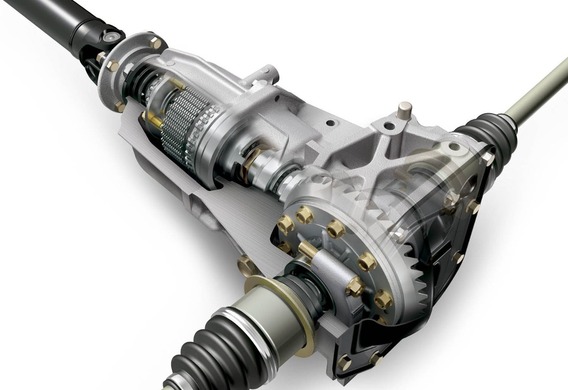
Looking at the reference, we shall see the definition: "Differential is a transmission mechanism that, by distributing the torque between two sub-units (wheels or bridges) in a given ratio, gives them rotation with different angular speeds." This is the standard description of this mechanism, which is understood by a graduate degree in mechanical engineering, although, as a student, he has already understood how this mechanism works. Our goal is to understand how this works and why this thing is present in our car without special knowledge in mechanical engineering, but only by logic and well-known facts. Okay, one more time.
Differential is obviously a mechanical device. And this device doesn't need a motorcycle or a bicycle. It is logical that the need to complicate the construction has arisen from the increase in the number of wheels. Although there are three wheel motorcycles and bicycles, some of you will say. You're right. Now, in this technique, either there's this thing called differential, or they're only driven by one of three wheels.
Here we are, not using a single term, and have come to understand the basis for which the differential is used. Specifically, to drive the vehicle at least two wheels.
All right, all right. Why not? Why can't you combine two wheels with a hard axle and twist them for that axis? It's technically possible. But that's the theme of another drifting article. For a normal movement, so that the tires of the car roll along the road, not slide in turns, it is necessary that the leading wheels roll at different speeds. Yeah, I know it sounds weird. The car is all alone at one speed, and the same wheels on the left and on the right are at different speeds. To avoid using complex terms again, let' s look at a simple example. Vanya, Vasya and Masha were driving. I was out of gas. The men got out of the car and started pushing it. Vanya got up on the left, Vasya on the right. Masha turned the steering wheel to the left to turn to the left, as the gas station just passed. We count the steps of Vanya and Vasi. He's deployed. Vanya made 10 paces and Vasya made 15. So all the wheels in the turns go different ways. Consequently, it rotates at different speeds. We will not go into detail now to figure out why this is happening, as it is already a matter of mechanics, our business is simpler. The main thing is why the wheels don't usually connect the hard-ass.
Although, of course, up to 1,897 differential cars were not placed on cars. It was true, however, that if the wheel-wheels were connected by a rigid axle, the vehicles were very reluctant to turn their wheels and the wheels were very fast. It is known that the constructs of varying degree of complexity performing the role of the differential existed in the world even before our era, but the universally recognized mechanical design of the differential appeared only in 1720 when Joseph Williamson used the differential mechanism in hours. More than a century, it was necessary for the know-how to get to the cars. In 1834, Richard Roberts patented the differential for road vehicles. In 1897, the differential was set on Shearer's steam car and solved these problems with wheel wear and tear.
Despite the fact that the differential has gradually gained its place in almost all four wheel vehicles, thanks to the solution of those undoubtedly serious problems, it quickly became clear that this very differential brought new problems into the car. If one of the wheels loses grip, the car loses the ability to accelerate. This is because the device of the differential causes the wheel to move according to the principle, which is easier to spin, then it is spinning. And this mechanism works well only when both wheels are securely holding the road-they work in pairs. As is known in the case, especially in Russia, the reliability of tyre adhesion to the road is under a big question. Water, dirt, snow, ice ... All these are the worst enemies of the classic principle of driving a car by simple differential.
Of course, thanks to engineers and inventors, these problems have now been resolved with some success. The basic principle of solving this problem lies on the surface, and after reading this article, it is certain already known to the readers. When the car is going straight-the differential is not necessary, it can be blocked by turning it into a common gear train. As soon as the driver has turned the wheel-lock, it is necessary to remove the car so that it is easy to wear and tyre wear is minimized. But the seeming simplicity of principle is, in fact, deceiving. Today, there are dozens of systems, with some success or other success, especially in full-drive systems, where these differentials do not require one or even two, but a whole three.









